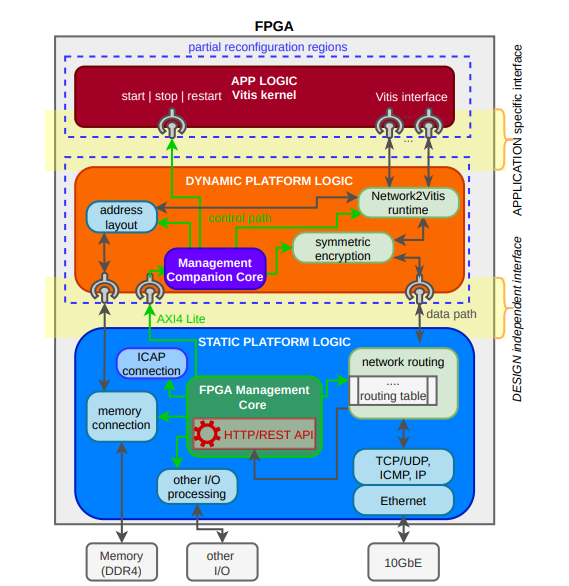A Case for Function-as-a-Service with Disaggregated FPGAs
Posted #research

What does it take to realize highly dynamic cloud services like Function-as-a-Service with FPGAs?
Find out in my recent paper titled A Case for Function-as-a-Service with Disaggregated FPGAs (DOI: 10.1109/CLOUD53861.2021.00047).
Published in the Proceedings of the 2021 IEEE 14th International Conference on Cloud Computing (CLOUD).
Abstract
The slowdown of Moore’s law and the end of Dennard scaling created a demand for specialized accelerators, including Field Programmable Gate Arrays (FPGAs), in cloud data centers. At the same time, compute resources are increasingly consumed via public and private clouds and traditional applications are modernized using scalable microservices and Function-as-a-Service (FaaS) offerings. Nonetheless, true FaaS based on FPGAs or other accelerators is virtually absent from the offering catalogs of all major cloud providers. In addition, FPGA applications are typically coded in a monolithic fashion, due to device and vendor specific dependencies, which reduces the portability and usability of FPGA cloud offerings further. However, FPGA-based FaaS can improve execution efficiency and minimize (tail-) latencies while decreasing costs. We propose a novel system architecture, called Mantle, that uses disaggregated FPGAs to enable scalable, usable, portable and efficient FaaS offerings for FPGAs. Our experimental results demonstrate a significant reduction of end-to-end service provisioning time to below 7 seconds and an increase in execution efficiency by a factor of 4 with negligible overhead.
Paper
You can find the PDF here.
Talk
You can find the corresponding conference talk here.